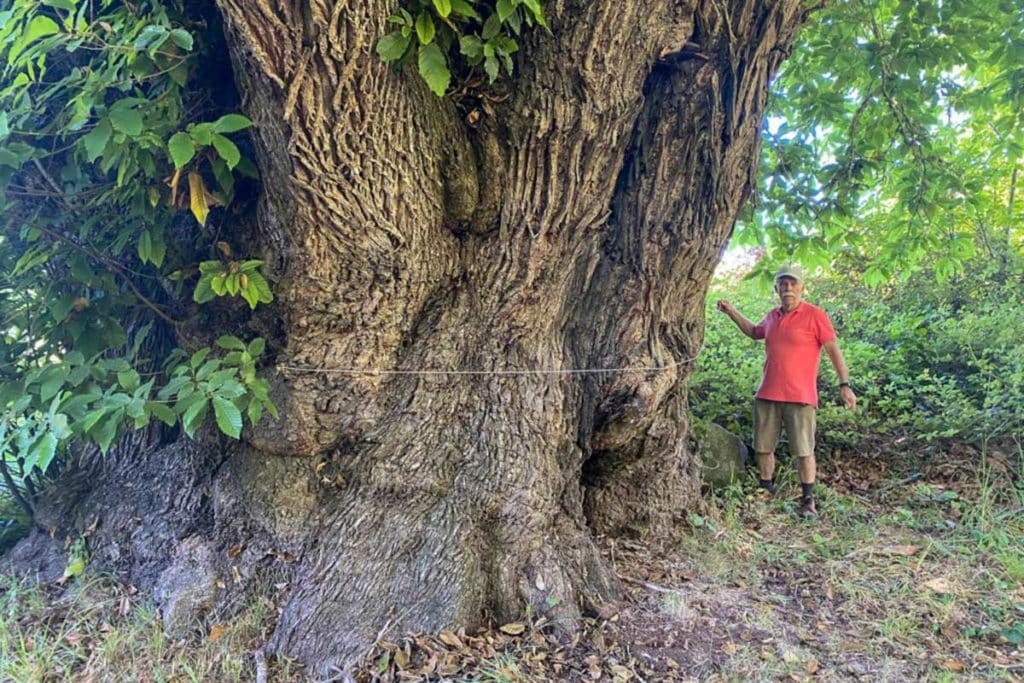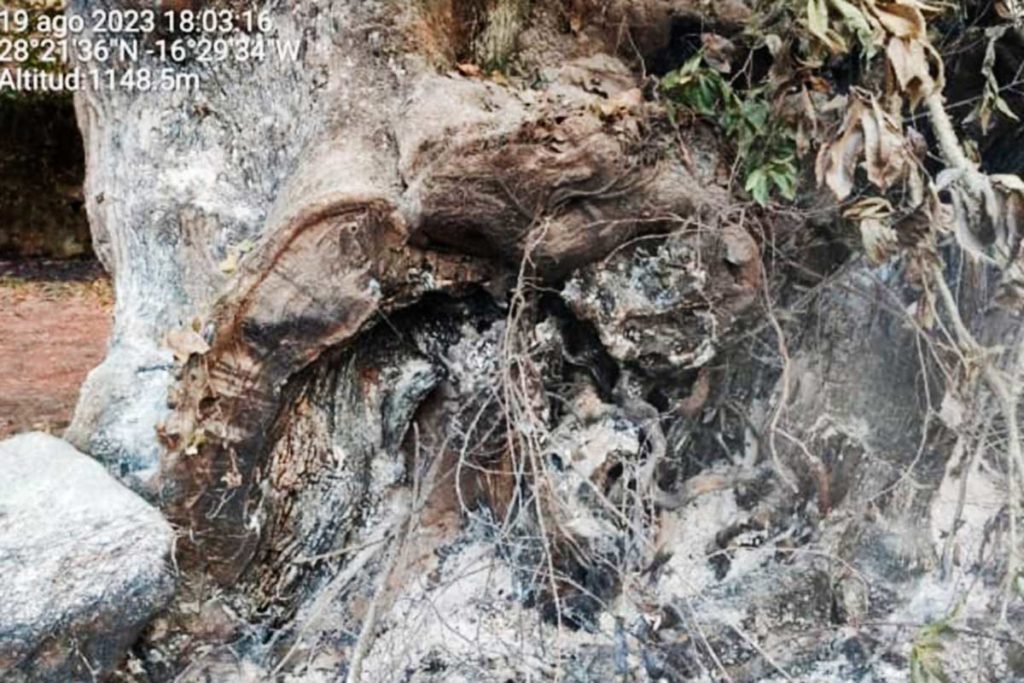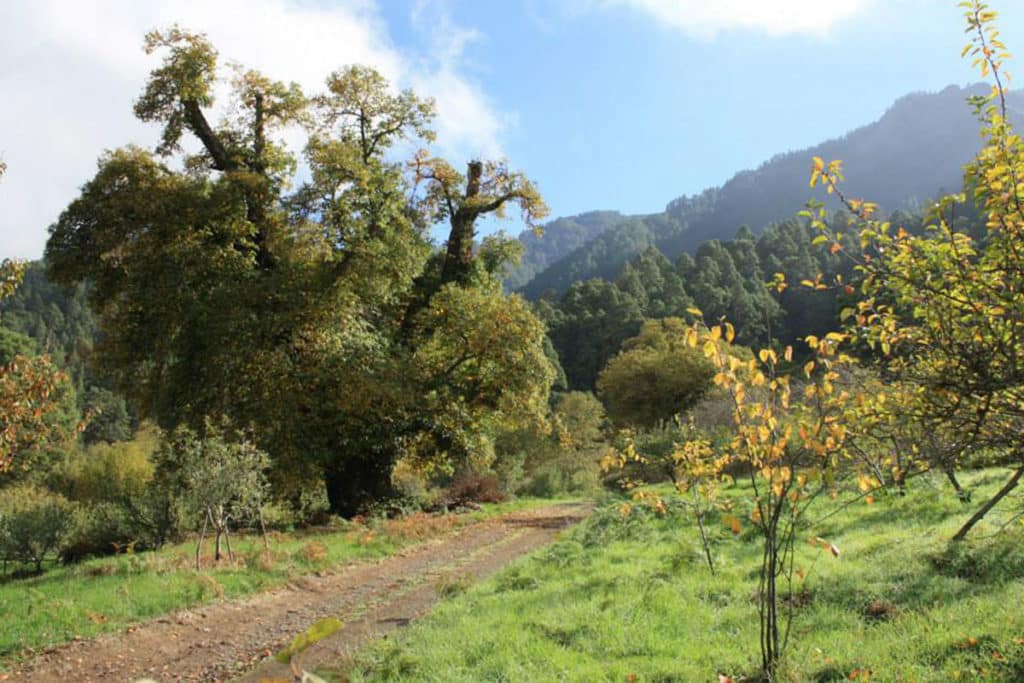It will take time to assess all the consequences of the serious forest fire that has just burn nearly 15,000 hectares in the Forest Crown of Tenerife. The technicians have classified it as the biggest fire that occurred on the island in the last 40 years and, furthermore, it has the unpleasant honor of being the most serious of all the fires this year in Spain. The fire broke out on the night of August 15 in the Arafo and Candelaria mountains and in ten days it spread unstoppably through a total of 11 municipalities, with a perimeter of almost 90 kilometers. He toured Acentejo and La Esperanza and entered the Valley of La Orotava to Los Realejos. The flames even penetrated the Teide National Park and burned some 1,100 hectares of broom in Izaña and El Portillo.
The Tenerife forestry engineer Federico Grillo, Director of Emergencies of the Cabildo de Gran Canaria, participated as an analyst in the extinction operation and highlighted the unusual voracity of this fire, “which will make it one of the most remembered”. However, Grillo downplayed the incident because, in his opinion, much of the affected pine forest “It will be possible to recover in a few months”taking into account the well-known natural resistance of the Canary Island pine and the uneven way in which the flames advanced.
However, there are some natural and heritage elements that the fire has destroyed forever. One of the most emblematic victims has been the legendary Chestnut of the Seven Pernadas, located in Aguamansa, in the heights of La Orotava. Listed as one of the historic and monumental trees of the Canary Islands, with about 500 years old, was hit by the flames a few days ago and, as confirmed to DIARIO DE AVISOS by members of the Tenerife Forestry Brigades (Brifor), “he is mortally wounded because the fire surrounded his base, burned the trunk open and now he is burning for inside. It will be very difficult to be saved from this. It is a matter of time before he falls ”, they assure.

This historic tree, located on a private estate belonging to the Arroyo family, at an altitude of 900 meters, was already touched years ago as a result of wind storms that tore off several of its giant branches, the pernadas that give it its name. Now it seems that the fire born in the distant Arafo has come to finish it off definitively, with which La Orotava and the island of Tenerife are going to lose a natural icon, comparable to the Millenary Dragon Tree of Icodalthough less famous for the remote spot in the mountains of Aguamansa where it takes refuge.
The prestigious professor of Botany from Tenerife and winner of the Canarias Award Wolfredo Wildpret did not hesitate to describe, in statements to this newspaper, as “one of the worst news of the fire” the loss of this unique arboreal specimen of more than 11 meters high and about 13 meters in perimeterwhich make it one of the largest chestnut trees in the Archipelago and the thickest in all of Spain.
The origin of its name, castaño or castañero de las Siete Pernadas, is due to the seven large branches that grew from its original trunk, leaving enough space between them for a table to be placed in the past, which was accessed through of a stone staircase, whose remains are still preserved. Under its wide crown, family meals and snacks were organized and ancient chroniclers say that some prisoners were hanged from its branches. They also cite legends that in the plains where this tree grew there was a bailadero or baladero, which was the place where the Guanches used to go during the dry season to dance and make their goats bleat to ask the sky for rain.

natural monument
The Tenerife journalist and writer Leoncio Rodríguez, in his book The Historical and Traditional Trees of the Canary Islands, says of the Agamansa chestnut tree: “Also of ancient origin, it measures more than twelve meters in circumference and at a short height from the trunk seven large segments start, all of considerable thickness, from which comes the name of the Seven Pernadas, which today have remained reduced to five, as two have been blown away by the winds. Among them, a table for five people had been installed in other times, which was climbed up by some stone steps, and where tourists used to have a snack.
The Siete Pernadas chestnut tree belongs to the exclusive club of historical and monumental trees of the island of Tenerife, whose maximum exponent is the Icod Millenary Drago. But in this catalogue, prepared in its day by the Department of Botany of the University of La Laguna and the Museum of Natural Sciences, There are also other extraordinary specimens.such as the Virgen de los Ángeles Pine of La Victoria de Acentejo, the Buen Paso Pine of Icod, the Tabaiba Dulce of Los Baldíos, the Cardón of El Chorrillo, the palm trees of the Camino Largo de La Laguna, the Pine of the Dos Pernadas from Vilaflor, the Drago del Sitio Liter from Puerto de la Cruz, the Centennial Viñátigos from Tacoronte, the Pino Gordo from Arico, etc.

It is very likely that the first chestnut trees to be planted in the Canary Islands were introduced by the conquerors. Historians narrate that the Adelantado Fernández de Lugo ordered the planting of chestnut trees in Tenerife in the first decades of the 16th century, with the double objective of producing fruit and wood. It is believed that one of these was the Siete Pernadas chestnut tree, located on the Aguamansa farm. Naturalists and travelers such as Humboldt (1799), von Buch (1815), Wangüemert (1862) and Du Cane (1911) documented the existence of a large chestnut forest in Tenerife, which stretched from Tacoronte to Los Realejos. The German geologist Leopod von Buch, who visited Tenerife in 1815, wrote that the best chestnut groves were found in Aguamansa. At that time, some large chestnut trees were already famous, such as that of the Marquis of La Candia, located in Villa de La Orotava itself, almost 16 meters high. Over time the trunk split. Another famous giant chestnut tree that has already disappeared was the one called El Confesionario, located on the La Hondura farm, belonging to the Marquis of La Florida. And at that time another nearby specimen was already known and admired, the Castaño de las Siete Pernadas, a monumental tree that now, after five centuries standing, is dying from the relentless attack of a fire monster.
















